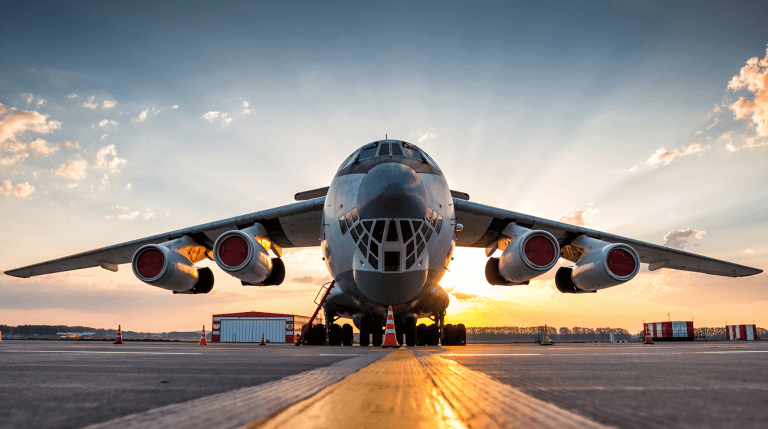The Business Times: Freight rates to continue uphill climb into 2022
“Those were very low levels, where container liners were not making economic profits,” said Steve Saxon, McKinsey’s partner leading the Travel, Logistics & Infrastructure Practice in China. “A reasonable planning assumption is that rates stabilise at levels maybe 50 per cent higher than in 2019 but still well down from the peak.”
Saxon was referencing the Shanghai Containerised Freight Index, a widely used indicator of sea freight rates for transport from China ports. In 2019, the index hit a peak of 959 points. As of Oct 15, the index closed at 4,558.07 points. As context, the index has languished below 1,000 points for most of the past decade, before passing the 3,000 mark in April this year and continuing its upward climb.
“We expect record freight rates, equipment imbalances, strong demand and tight supply to last well into late 2021 and early 2022,” said Rahul Kapoor, vice-president at IHS Markit. “Container demand has been extremely strong and witnessed strong recovery, the demand decline for goods far outpaced services in early 2020 and the reverse has happened in late 2020-early 2021, partly explaining the surging container demand. We expect rates to start easing only in 2022 and still stay at a very elevated level.”
Beyond the traditional end-of-year peak sales periods (Christmas and Black Friday), the Chinese New Year period will likely contribute to elevated rates.
Henry Ko, managing director, Asia, at freight forwarder Flexport, noted that industry rates have seen exponential rise over the last 18 months.
In 2016, rates on the Trans Pacific East Bound (TPEB) were US$400. In comparison, rates on the TPEB and Far East Westbound (FEWB) were around US$3,000 in January 2019. In the month of August, rates across the globe have been in the double thousand digits.
“Another major peak season that happens during the year is pre-Chinese New Year, where importers rush to get as many products out as possible before the factories shut down and manufacturing capacity is significantly reduced,” said Ko, even as he cautioned that no two years are the same.
In a recent market update, Flexport noted that uncertainty surrounding TPEB floating rates is primarily due to the recent reductions in demand as a result of the Chinese Golden Week and electric power restrictions. “Whether rates will continue to flatten, reduce or even increase to peaks again remains unclear,” it said.
On the Asia-to-Europe route (FEWB), rates remain at “a record high level” but have been stable going into September with a marginal increase in October, according to the report. Space is “extremely critical” with severe equipment shortage across all Asia origins.
On the US front, meanwhile, efforts are being taken to work through backlogs. US President Joe Biden announced on Oct 13 a deal to expand operations at the Port of Los Angeles, making it a 24-hour 7-days-a-week operation.
“The driver of the demand spike is congestion issues, especially in North America, taking out effective supply. If ships are waiting outside ports (and the current queue outside LA/Long Beach is over 60 ships), then this capacity is not usefully moving cargo,” said McKinsey’s Saxon.
Gerry Tan, honorary secretary of Singapore Logistics Association (SLA), too does not expect freight rates to come down in the short term. He cited the upcoming holiday season, dwindling stock levels caused by the slower and prolonged supply chain problem, as well as more economies opening up and rebuilding their activities and inventories, as factors keeping rates up.
“On top of the intensified competition for an already tight ocean freight capacity, rising oil prices and constraints of a congested supply chain system (play a part),” said Tan. “While the introduction of new container capacities might ease the pressures on rates, it’ll foreseeably continue to remain at higher levels as compared to pre-Covid levels into 2022.”
The impact is already being felt on air freight rates as more move to air cargo as a more reliable and less-costly alternative for smaller consignments that have been hampered by port congestion and delays.
According to a June 2021 report by the International Air Transport Association, 18 per cent of air cargo is e-commerce and this is expected to rise to 22 per cent by 2022.
“The current air cargo volumes are mainly driven by e-commerce and healthcare, and we foresee these two sectors will continue to drive the volume and demand,” said Tan.
During pre-Covid days, shipping was the most reliable main mode of freight for healthcare products as shippers had the tracking capability and connectivity to send healthcare cargos directly to the drug distributors without third-party logistics providers being involved.
“This was something the air freight vertical lacked previously,” noted Tan. “With an unpredictable ocean freight situation, air freight will continue to be the main freight mode for healthcare in the near future.”
Overall, these translate to higher operational costs for logistics companies. In addition to higher freight costs, transportation costs too have increased due to higher manpower costs and constraints, port fees, and month-long delays in some countries, according to Tan.
“The global port congestion has introduced more uncertainty into planning and booking of sea shipments, as freight forwarders have to adapt to some of the shipping liners’ last-minute decisions to skip ports that are closed, disrupted by Covid-19, or have too long a waiting time for berths,” he said. “The schedule changes, uncertainty in ship berthing time, and availability of containers impact logistics companies who are coordinating sea-air multimodal freight. Sometimes forwarders have to forgo their bookings and payments on-air slots when ships are delayed coming into seaports.”
On its part, SLA has been working with key stakeholders to ease the burden on members. This includes working with the PSA to help reduce the impact of port congestion and get better visibility on ship schedules or unforeseen situations. The association has also been looking to build alternative pools of the workforce including ex-army officers, inmates, and ex-offenders by customising curriculums that will equip them with the necessary skills to join the sector.
Jonathan Savoir, co-founder, and CEO at Quincus, said he expects things to get worse in the short term with the traditional peak period for sales around the corner.
“It will get a little bit worse through Black Friday and Christmas and it is on providers to essentially make sure that capacity stays up and try and increase this as much as possible,” he said. “In terms of the longer term, this does ease. As both retailers and manufacturers are becoming a bit more comfortable with what current delivery times are, they’ll be able to plan and mitigate that a bit better and that will ease the crunch over time. But we’re talking 3 to 6 to 9 months before that really happens.”
Prices are stabilising but this process will continue well into next year, added Savoir. But, he stresses, it will take time. For air freights, “this will start easing over time (but) we don’t expect the flight to hit pre-pandemic levels. Prices will remain high but we’re looking at it as a slow easing of the problem.”
Subscribe to keep up with our latest news








